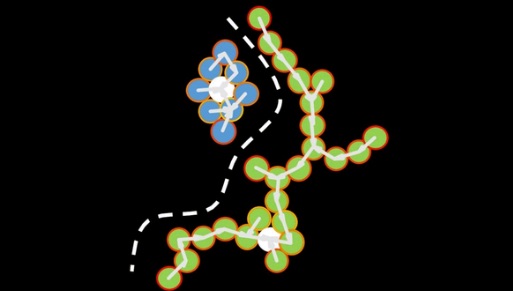
An interdisciplinary team of researchers from the USI Institute of Computational Sciences (ICS) and the Institute for Research in Biomedicine (IRB), affiliated to Università della Svizzera italiana USI, Lugano, have developed a new Artificial Intelligence method that enables the analysis of complex biomedical data. The results of the research have been published in the renowned scientific journal Science advances.
Nowadays, computers and humans can collaborate to advance scientific research: whereas, computers can analyse large amounts of data, humans have precious knowledge, coming from their life experience. This knowledge still allows humans to solve difficult problems in better ways than computers.
Therefore, an exchange of knowledge between computers and humans is important to collaboratively achieve complex tasks. Amongst these, the interpretation of data coming from patients or biological samples is very difficult because of the many differences between individuals. Indeed, medicine and biology are disciplines largely based on empirical knowledge, which is difficult to be exchanged between humans and computers.
To this end, an interdisciplinary research team at ICS and IRB, Switzerland, led by Professors Rolf Krause and Santiago González, had the idea to represent knowledge as a path.
“The human body is a complex network of cells, molecules, etc. It is like a forest with several paths. By exploring these paths, it is possible to understand how it is structured. Computers can tell humans which path exist, and humans can tell to computers which paths they already explored”,
says Diego Ulisse Pizzagalli, the main author of this publication that was carried out during his doctoral studies at USI.
This concept gave rise to a new computational method to analyse complex data sets. The method has been proven to be better than current existing methods for the analysis of microscopy images of immune cells, electrocardiographic records of patients with different types of arrhythmia and microarray gene expression from patients suffering different types of leukaemia. This demonstrate that this method can be used in several fields such as in immunology, cardiology, and oncology.
This work was possible thanks to funding from the Swiss National Science Foundation and SystemsX.ch, the Swiss initiative in Systems Biology.
Article: «A trainable clustering algorithm based on shortest paths from density peaks.»
Pizzagalli D. U., Gonzalez S. F., Krause R. Science advances (2019)
http://advances.sciencemag.org/content/5/10/eaax3770
Image: Courtesy of USI Institute of Computational Sciences
Source: Università della Svizzera italiana USI, Lugano, Svizzera, 31-10-2019
https://www.usi.ch/
Dijkstra’s algorithm in 3 minutes — Review and example
Source:
Michael Sambol
«Step by step instructions showing how to run Dijkstra’s algorithm on a graph.»
YouTube 15.09.2014
youtu.be/_lHSawdgXpI
Greedy-Algorithmen wählen iterativ schrittweise genau denjengen Folgezustand aus, welcher jeweils zum Zeitpunkt der Wahl das beste Ergebnis verspricht.
Der Dijkstra-Algorithmus wurde im Jahr 1959 von dem niederländischen Informatiker Edsger Wybe Dijkstra in seinem Artikel «A note on two problems in connexion with graphs» in der Zeitschrift Numerische Mathematik veröffentlicht.
